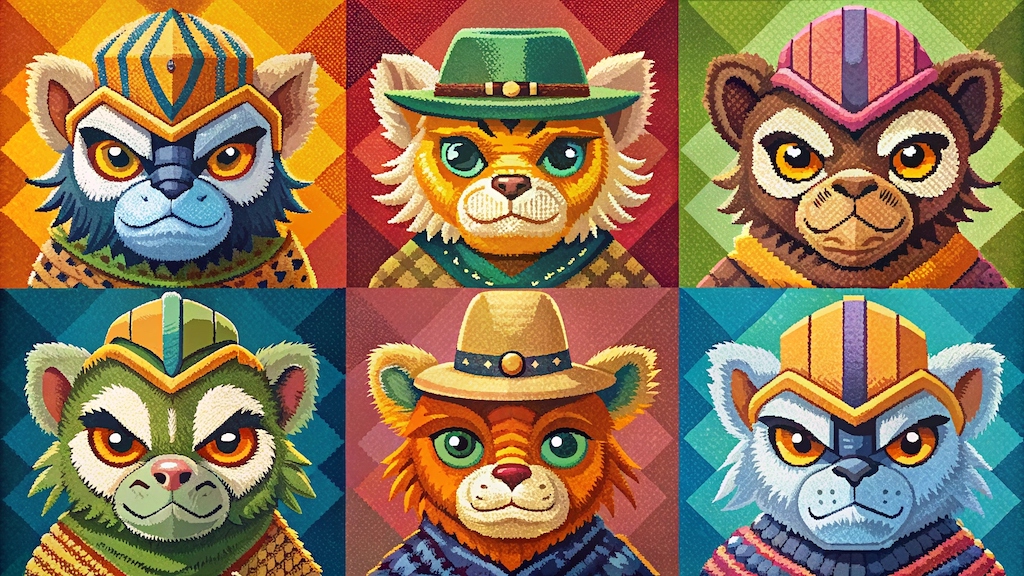
A Comprehensive 2025 Guide to Understanding and Navigating the NFT Market
Non-fungible tokens, or NFTs, have taken the digital world by storm. From million-dollar art sales to viral internet collectibles and innovative applications in gaming, music, and even sports, NFTs are shaping the future of ownership and creativity in the digital age. Yet, with so much hype and rapidly evolving technology, it can be daunting for newcomers to understand what NFTs truly are, what makes them valuable, and how to steer clear of potential risks.
This guide unpacks the essentials about NFTs, breaking down the technology, value drivers, and practical advice for anyone thinking about entering this unique sector of the crypto economy. Whether you’re an investor, creator, or just curious about the latest digital trends, this article will provide the foundation you need to navigate NFTs confidently.
1. What Are NFTs? Understanding the Core Concept
NFT stands for “non-fungible token.” At its heart, an NFT is a unique, digital marker of ownership stored on a blockchain, most commonly Ethereum or similar networks. Unlike cryptocurrencies like Bitcoin or Ethereum, which are fungible (each coin is identical and interchangeable), NFTs are unique and cannot be swapped one-to-one with another.
This uniqueness makes NFTs ideal for representing digital items that are one-of-a-kind or in limited editions, such as:
- Digital artwork
- Collectible images and trading cards
- In-game items like weapons or skins
- Music tracks and albums
- Videos, animations, and GIFs
- Virtual real estate and avatars
When you own an NFT, you possess a digitally verifiable receipt or certificate of authenticity. The NFT points to the digital file (art, music, etc.), with blockchain technology proving your ownership, transfer history, and potentially offering built-in royalties for creators.
2. How Do NFTs Work? The Technology Behind the Scenes
NFTs rely on blockchain technology—public, distributed ledgers that record every transaction transparently and securely. Most NFTs are created and managed using smart contracts on Ethereum, though rival blockchains like Solana, Polygon, and Flow are gaining ground.
Key features that make NFTs possible include:
- Unique Token IDs: Every NFT has a distinct identifier, ensuring no two tokens are ever exactly the same.
- Metadata: NFTs store extra data, such as the name, description, creator, and often a link to the digital asset (like an image or video stored on IPFS or another decentralized storage).
- Immutable Ownership History: The blockchain records every time an NFT changes hands, offering a trusted chain of provenance.
- Programmability: Creators can embed rules into NFTs, such as paying resale royalties automatically whenever the NFT is sold again.
Minting is the process of creating a new NFT on the blockchain. Buyers and sellers use online platforms—called NFT marketplaces—like OpenSea, Blur, Rarible, and Magic Eden to trade NFTs.
3. Why Are NFTs Valuable? Key Drivers Shaping NFT Prices
The NFT market can be volatile, with prices soaring and crashing based on a complex mix of social, technical, and cultural forces. However, several core factors tend to drive an NFT’s value:
Scarcity and Supply
Rarity is one of the most powerful attractors of value. NFTs can be single editions (1/1) or limited runs (such as 10,000 unique items in a series). Generally, the fewer copies of an NFT that exist, the higher the potential value — assuming there is demand.
Artist or Creator Reputation
Just as in the traditional art world, the popularity, history, and relevance of an artist greatly influence NFT prices. High-profile creators, celebrities, or known brands tend to command higher values, while anonymous or inexperienced creators may struggle unless their work goes viral.
Utility and Functionality
NFTs with practical uses stand out. These include in-game items that unlock features or characters, NFTs that provide access to exclusive content or communities, or tokens offering voting rights in decentralized projects. The more an NFT does beyond simply existing as a collectible, the higher its potential value.
Community and Hype
Buzz is a huge factor in NFT valuation. Communities often rally around particular collections, driving up excitement and prices. Effective use of social media, influential endorsements, and viral trends can cause massive swings in value.
Provenance and Historical Significance
NFTs with unique histories or roles as “firsts”—such as the first NFT by a major artist or an asset tied to an historic event—may command significant premiums over time, similar to rare antiques or vintage baseball cards.
Aesthetics and Emotional Resonance
At the end of the day, many buyers are motivated by personal taste or nostalgia. An NFT’s design, backstory, or emotional impact on collectors can make it highly sought after, even if it lacks other value factors.
4. How to Evaluate NFTs Before You Buy
The NFT market is open to anyone but fraught with both opportunity and risk. Carefully consider these points before investing:
- Research the Project: Who are the creators and backers? Does the collection have a roadmap, and are previous promises delivered? Reliable teams and detailed documentation suggest a lower risk profile.
- Check Rarity and Supply: Are you buying a one-of-one, a limited edition, or a mass-produced collectible? Higher scarcity tends to boost value.
- Track Community Engagement: Real value is built when communities exist beyond price speculation. Check social media, forums, and Discord communities for authentic, ongoing engagement.
- Review Artwork Quality and Metadata: Does the NFT feature quality art, music, or design? Is the metadata well-structured and available on-chain?
- Utility Assessment: Does the NFT do something useful? Will you gain access, voting power, or in-game assets by owning it?
Treat NFTs like any speculative asset: conduct due diligence, be skeptical of hype, and do not risk more than you can afford to lose.
5. Common NFT Pitfalls and How to Avoid Them
With explosive growth comes increased risk. Here are some of the most frequent dangers facing NFT buyers and how to protect yourself:
- Rug Pulls and Exit Scams: Sometimes developers launch flashy NFT projects, collect funds, then vanish, leaving buyers with worthless tokens. Protect yourself by examining team transparency, smart contract code, and whether the creators have a track record.
- Fake Listings and Copycat NFTs: Scammers sometimes sell unauthorized copies or forgeries of existing NFTs. Always verify authenticity by checking official links from reputable sources or directly from the creator’s website or social media.
- Overpaying Due to Hype: FOMO (fear of missing out) can lead buyers to bid too high on trending NFTs. Set personal budgets and avoid succumbing to social media pressure.
- Illiquidity: Just because an NFT is listed at a high price doesn’t mean you will be able to sell it quickly. Do not expect every purchase to be resellable on demand.
- Smart Contract Risks: Poorly written or malicious smart contracts can expose buyers to hacking or loss of funds. Stick to well-audited projects and established marketplaces.
Remember, like any marketplace, there are risks as well as rewards, requiring careful decisions and a cautious approach.
6. Staying Safe With NFTs: Security Best Practices
Ensuring your NFT journey is secure involves more than just picking the right asset. Protect your investments and accounts by following these guidelines:
- Use reputable NFT marketplaces with strong customer reviews and established histories.
- Always double check website URLs to avoid phishing scams that mimic real platforms.
- Store purchased NFTs in secure wallets (hardware wallets for higher-value assets). Never share your private keys or recovery phrases.
- Enable two-factor authentication and consider multisig wallets for added protection.
- Beware of unsolicited social media offers, messages, or links related to NFT drops or giveaways.
A proactive approach to security will help keep your digital collectibles safe from hackers and scammers.
7. The Future of NFTs: More Than Just Collectibles
While NFTs started with digital art and collectibles, their applications are expanding rapidly. Expect to see:
- Integration with virtual worlds and games where NFTs represent unique items, avatars, or land plots.
- Musicians and creators using NFTs to sell concert tickets, album releases, or fan experiences.
- Businesses leveraging NFTs for supply chain tracking, customer loyalty programs, and brand engagement.
- Use of NFTs for digital identity, certification, and cross-platform ownership.
With new blockchains, marketplaces, and creative uses emerging every month, NFTs are poised to remain at the forefront of digital innovation in 2025 and beyond.
Building Confidence and Finding Value in the NFT Marketplace
NFTs represent a blend of technology, art, culture, and economics that is unique to the digital era. By understanding what NFTs are, how they derive value, and what pitfalls to avoid, newcomers can explore this exciting market with both creativity and caution.
Whether your goal is collecting digital art, gaining access to exclusive experiences, or investing in the next big thing, start with knowledge, community connections, and a clear-eyed view of the risks and opportunities. The NFT world is still young, and its story is only beginning. Approach it with curiosity, commitment to learning, and robust security habits for the most rewarding experience.















